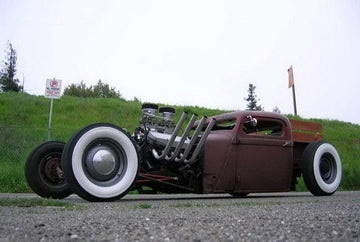Mufflers, which are also called tail pipes or exhaust pipes, are tubes that attach to vehicle engines to reduce the amount of noise the engine produces. The majority of the sound produced by an internal combustion engine comes from the gasses expelled as exhaust. Motorcycles are typically louder than cars because the mufflers are much shorter and closer to the engine. However, they still manage to mitigate the sound produced.
How a Muffler Works
The exhaust pipes force gas and sound pressure through a pipe that is lined with a series of chambers and passageways which channel the gas. This redirection of the gas reduces the amount of sound.
A perforated steel tube forms the core of many exhaust muffling systems. The gas produced by combustion is expelled into the tube. As the gas travels, it escapes through the holes into a larger pipe and dissipates slowly. Once the gas escapes through the holes, it hits the baffles inside the outer pipe that block the sound. Slowing down the speed of the gas reduces the pressure and thus, reduces the noise. Also, chambers inside the pipe cause the sound waves to bounce back the direction from which they came, creating opposing sound waves that cancel each other out.
Best Materials
Combusting gasoline or diesel produces extremely high temperatures, high pressure, and a series of corrosive byproducts. Due to these extreme conditions, the perforated steel tube in the center of the muffler is normally mild steel or stainless steel. These types of metal resist melting or warping under the extreme temperatures of combustion. The exhaust of a four-stroke motorcycle can be over 700 degrees Fahrenheit as it enters the exhaust pipe. These high temperatures are even more extreme in older bikes that do not recirculate exhaust gas into the engine. The metals can get as high as 1200 degrees. Considering that aluminum has a melting point of roughly 1220 degrees Fahrenheit, it is safe to assume that an aluminum pipe would be undermined by high temperatures. Stainless steel, on the other hand, has a melting point of roughly 2750 degrees Fahrenheit, meaning that it will be much more reliable as a pipe material.
In addition to being more resilient under high temperature, stainless steel is resistant to high pressure. Stainless steel has an ultimate tensile strength nearly twice as high as many aluminum alloys. That means the pressure of exhaust gasses are unlikely to warp the perforated steel tube at the center of the muffler.
Stainless steel is also finished with a protective coating that prevents it from corroding when exposed to the harmful byproducts of exploding gasoline. Also, it resists rusting when exposed to the elements.
Performance
Lastly, when constructing a muffler, you should consider the back pressure it might create. Back pressure is caused by twists, turns, and obstructions in an exhaust system. This resistance can reduce engine efficiency and hurt your vehicle's performance. A perforated steel tube core creates very little resistance to the gas flow. For this reason, they are very efficient cores for engine-silencing systems.
Articles
Perforated Steel Tube Cores for Exhaust Pipes





